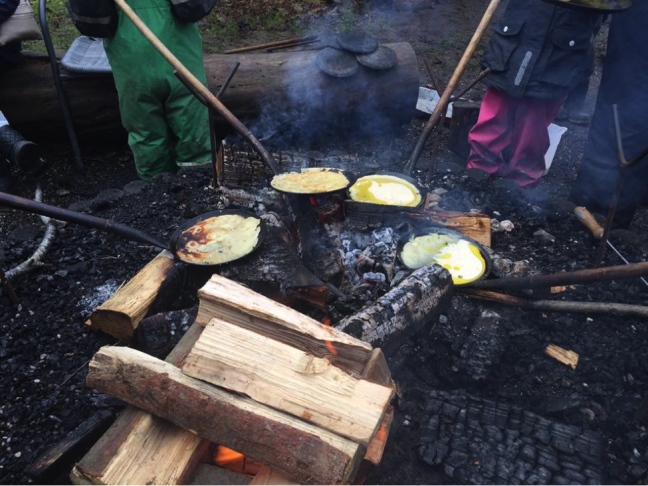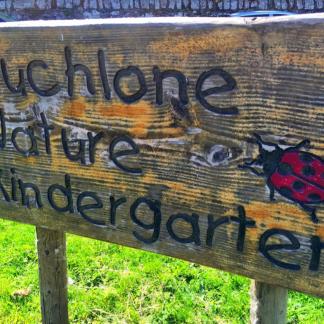Recently, I had the privilege of studying child development in Copenhagen, Denmark, through a semester-long internship at a forest kindergarten. Through observation and experiential learning, I started to understand more about Danish culture and pedagogy – and how the Danish approach to early childhood education contrasts with the American perspective. I came to believe that we stand to benefit from understanding how Danish schools respect difference, encourage autonomy, and trust children to direct their own learning, especially through risky play. I hope that my experiences and observations will help other educators, too, to think about the cultural assumptions and conceptualizations that we bring to early childhood education.
Accommodating Differences
In Scandinavian countries, the notion of “child-centeredness” pervades early childhood education. This means that each child’s personality, temperament, and unique developmental path are acknowledged and appreciated, and that teachers are responsible for creating a space that accommodates differences. I was able to observe these child-centered practices as I shadowed Danish forest kindergarten pedagogues, or teachers, over the course of several months. Children ranging from two to five years old were mixed together and encouraged to interact and play with one another outside. Each child varied in terms of emotional, social, and cognitive development. Pedagogues remained sensitive to these differences; they recognized each child’s potential and guided students as they embraced challenges and engaged in outdoor play.
A great example of this was the checkpoint system I observed in the forest kindergarten. When embarking on nature walks, pedagogues established pre-determined checkpoints along the trail. Children were given the freedom to sprint, walk, or skip to reach each checkpoint, but, once they arrived, they were instructed to wait for the entire group before leaving and venturing to the next checkpoint. Examples of checkpoints were trees marked with an “X,” a bench, or a natural landmark. This system provided each child with the opportunity to enjoy their unique journey and to observe the environment and wildlife around them at their own pace. It also took into account the different speeds, needs, and abilities of students to create an inclusive environment.

Freedom to Play
In my classes on child development, we frequently discussed the idea of a “Good Childhood” in Denmark. This term tries to capture the appreciation of childhood as a developmental phase during which each child is encouraged to mature at her or his own pace. With this mentality, Danish children are trusted with the time, space, and opportunity to become independent from adults and to develop their own sense of autonomy (Wagner, 2006). In forest kindergartens, children develop independence by dressing themselves for the outdoors, constructing their own games, and grabbing onto branches and climbing up into trees without the help of an adult. This independence is crucial for the development of self-confidence and self-esteem.
Scandinavian countries value childhood as a revered, nostalgic period of time that is not rushed, but rather embraced. As a result, children are encouraged to enjoy their youth and to appreciate play and natural curiosity as forms of learning. Without the looming pressures of high-stakes, standardized assessments, Danish children enjoy learning at their own pace in relaxed, loosely structured educational settings. Within the Danish forest kindergarten, children enjoyed unstructured playtime and focused on socializing with peers through creative and interactive play. These social interactions helped children learn how to communicate and relate to others.
Spontaneity of Learning
During my internship, I often saw Danish children using their freedom and imagination to transform spaces and experiment with different perspectives. The children imagined themselves as animals exploring their natural habitats – such as crocodiles hunting for a human treat, monkeys swinging from branches in search of bananas, or even fairies concocting magical mud potions. This flexibility in the curriculum and the freedom to adapt learning to an ever-changing outdoor context are hallmarks of Danish forest preschools. Through self-directed play, or the opportunity to design their own games and imaginary worlds, children in forest kindergartens followed their natural instincts to construct, investigate, and represent. They built, questioned, and expressed knowledge until they internalized a meaningful idea and then started anew. Outdoor spaces and natural affordances provided them with limitless possibilities for play and learning.
In the United States, preschools often strive to prepare children for the environment and academic rigor of kindergarten. Some American parents may worry that the unstructured, play-based approach of forest preschools will not adequately prepare their child for the academic and social expectations of kindergarten. But this definition of readiness only makes sense in a cultural context in which children’s development into adulthood is accelerated. The flexible structure of Danish forest preschools, the trust placed in children’s individual developmental paths, and the spontaneity of nature-based learning contrast sharply with traditional teaching methods and performance anxieties in the United States.

Risky Play
Modern-day American children are also often limited in their outdoor play by parental and cultural anxieties surrounding safety. These parental anxieties have increased over recent generations as stories of accidents, kidnappings, and lawsuits have pervaded the media. This growing concern surrounding liabilities and accountability provide challenges for preschools that embrace risky play. But it is important to make the distinction between a risk and a hazard. Risks are inherent dangers that children are aware of. Children learn how to assess the environment, recognize that an activity may be potentially dangerous, and navigate that situation safely. Engaging in risky play enables children to recognize their personal limitations and challenge themselves appropriately. Climbing trees, whittling with small knives, and crossing shallow waters are examples of risks. Hazards, however, are dangers that a child is unaware of. Because a child is unable to recognize them and take necessary precautions, hazards have the potential to cause serious harm. Example of hazards include dead wood, whittling with dull knives, or rapidly rising water following a storm. It is the responsibility of teachers to identify and eliminate hazards so that they can establish a safe environment that encourages healthy risk-taking and exploration.
As a natural form of play, children engage in risky play to experience and explore their surrounding environment. This form of play is both thrilling and invaluable from a developmental standpoint as children acknowledge the risk of potential injury, but choose to challenge themselves, trust their instincts, and realize their capabilities. Danish pedagogues provide children with ample opportunities to engage in risky play. Whether children decide to balance while walking across fallen trees, run down steep hills, or whittle twigs with small knives, risky play enables them to develop self-confidence, courage, and resiliency as they safely venture outside of their comfort zones.
My internship in a Danish forest kindergarten lasted only one semester, but it instilled a passion for nature-based early childhood education. It also prompted me to think more carefully about the importance of the cultural context in which forest preschools operate and how early childhood educators everywhere can benefit from a closer engagement with the ideas and best practices of Danish pedagogy.
About the Author
Samantha Leder is serving with City Year, an Americorps program, in Boston, MA, and has a B.A. in Psychology and American Studies with a concentration in Education from Kenyon College. She will be teaching at the Forest Gnomes Waldkindergarten in Natick, MA, beginning September 2018.
References
Wagner J. T. (2006). “An outsider’s perspective: Childhoods and early education in the Nordic countries.” In Einarsdottir, J. & Wagner, J. T. (Eds.). (2006). Nordic childhoods and early education. Greenwich, CT: Information Age Publishing.




